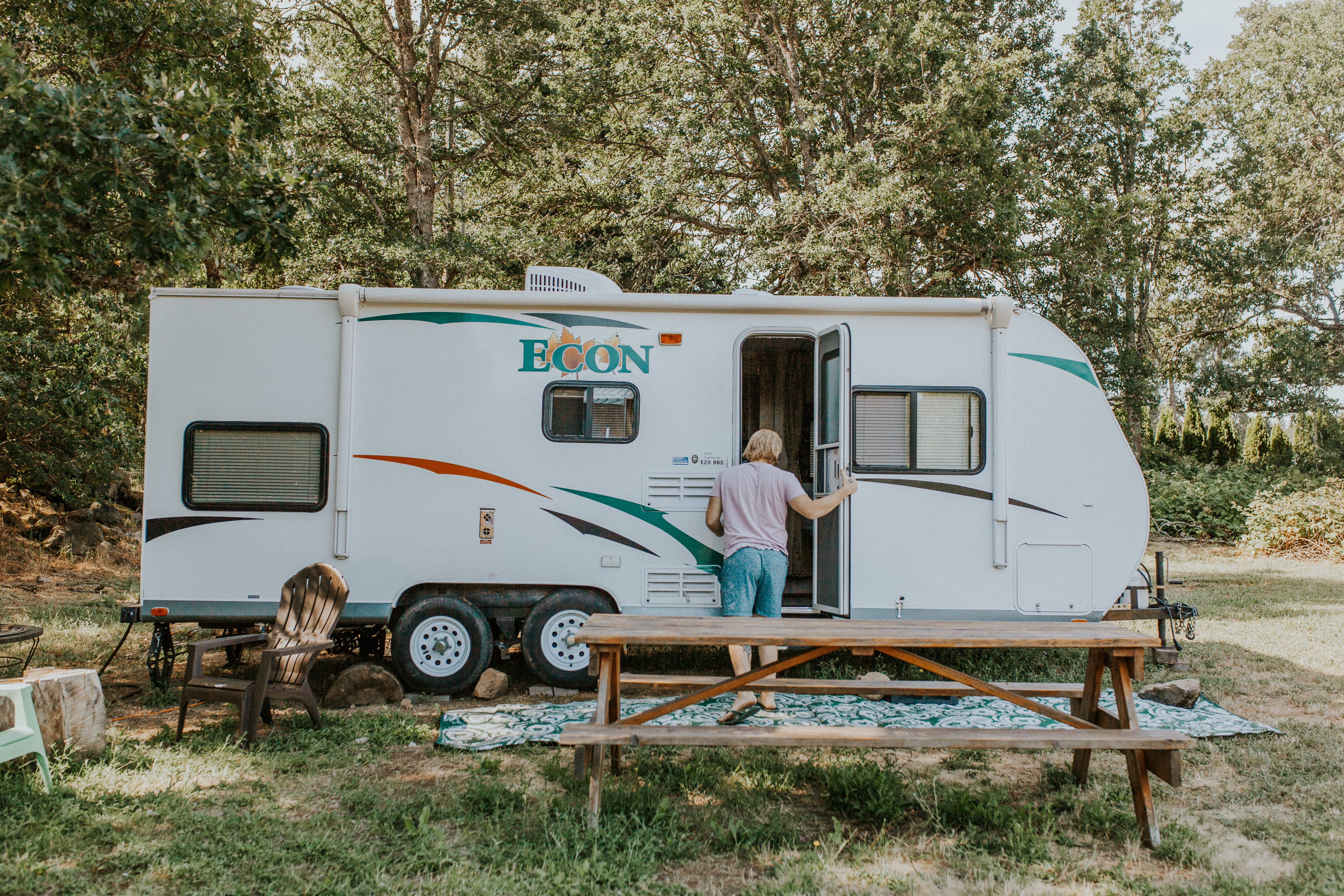How to Set Up the Perfect RV Listing on Hipcamp


Photo by Brittany S. At RV Site on Beautiful Blueberry Farm, OR.
Adding an RV listing to your land is a great way to bring in extra income year-round. Not only do RV campers stay 40 percent longer than tent campers (more nights means more money), but they’re less impacted by seasonality in your region. If it’s hot, they’ve got AC. If it’s cold, they’ve got shelter.
On Hipcamp, there are 3 types of recreational vehicles you can host, from smallest to largest:
- Vans (think mini-van at the smallest, postal service truck at the biggest)
- Trailers (think 8-foot teardrops to 50-foot trailers)
- RV motorhomes (anywhere from the size of a postal truck to a semi-truck)
Assuming you have a flat, private space that is easily accessible by a large vehicle, setting up an RV listing for any or all of the above vehicle types on Hipcamp is easy. Here’s our quick guide to making the best RV listing possible:
1. Set your RV listing up correctly
First, after creating a new RV listing, you’ll want to visit the “Accommodation” section of the listing and select the types of vehicles the site can accommodate. From there, you’ll be prompted to specify what sort of RV hookups you offer—unsure what these are? No problem, check out our guide to RV-friendly amenities here.
Next, you’ll specify how the RV is expected to access the site: pull-through, back-in, or pull-in. Try to select a site that a large vehicle can pull-through—that’s easiest for the driver.
Since RVs come in all shapes and sizes, it’s important you be very specific about the size of RV you can accommodate. RV campers will filter their searches with their RV size to make sure they’re only seeing camps that can accommodate them. Make sure you show up in these searches by specifying the size you can accommodate.
Here’s a quick guide to help you visualize what size RV your site can fit:
You can also bring out a measuring tape to measure the length, width, and height of the site. Once you know what size you can accommodate, type in the length and the width in the “Pricing” section of your RV listing.
You can view this FAQ for a step by step guide on how to update your RV settings.
2. Optimize your camp name and description
First things first, make sure you add the term “RV” to the name of your new RV listing, as well as what makes it special. Here are some examples we like:
- Private RV Site on Maple Shade Farm
- Beachside RV Campground
- Secluded Hillside RV Camp
- River View RV Site
Next, make sure you clearly outline all the need-to-know’s for an RV camper. Here’s what you should write about, in this order:
- Introduce your property (acreage, what cities or points of interest it’s near.)
- List the RV hookups you provide (sewage, water, electric—how many amps, if so?) Mention other general amenities you offer. (Are pets allowed? Is there a pool? Laundry?)
- Be very clear about access to the site. What sort of clearance can they expect? Is the road bumpy? Steep? Are there tight turns? Picture what a school bus would like to know about driving down your road.
Here’s an example of a description we like:
Park your RV or trailer on our rural 5-acre property, which is in close proximity to the cities of Phoenix, Scottsdale, Cave Creek and Carefree, Arizona. Gorgeous Sonoran desert surrounds this equestrian area. Great hiking, horseback riding, and mountain biking nearby.
Hookup to sewer, water, and 30 amp power. We recently installed an outdoor Jacuzzi hot tub.
Indulge in the peacefulness of our area, the natural beauty of the Sonoran Desert, the many horse ranches in the area, and perhaps best of all the wildlife. Don’t be surprised if you hear coyotes howling at night, and catch the javelina family paying a visit, or perhaps you’ll see a bobcat chasing rabbits, or the owls in flight or our gorgeous Arizona cardinals.
3. Add lots of clear photos
When it comes to RVs, the saying “a picture’s worth a thousand words” could not be more true. Provide as many photos as you can of the site (in use, if possible) as well as the road to access the site so the RV camper can see if they’re a good fit—literally.
Here are some examples of helpful RV photos:
Inspired to create your own RV listing and start hosting Hipcampers? Start a listing with Hipcamp.
Recent Posts
Hipcamp Awards 2024: Best Glamping Sites in the US
To help you find the best camping in the country, each year we compile data from bookings, reviews, and ratings…
Hipcamp Awards 2024: Best Glamping Sites in Canada
To help you find the best camping in the country, each year we compile data from bookings, reviews, and ratings…
Hipcamp Awards 2024: Best Glamping Sites in Australia
Awards season has arrived! To help you find the best camping in the country, each year we compile data from…
Hipcamp Awards 2024: Best Glamping Sites in the UK
To help you find the best camping in the country, each year we compile data from bookings, reviews, and ratings…
Hipcamp Awards 2024: Best Cabin Rentals in the US
To help you find the best camping in the country, each year we compile data from bookings, reviews, and ratings…
Hipcamp Awards 2024: Best Cabin Rentals in Canada
To help you find the best camping in the country, each year we compile data from bookings, reviews, and ratings…